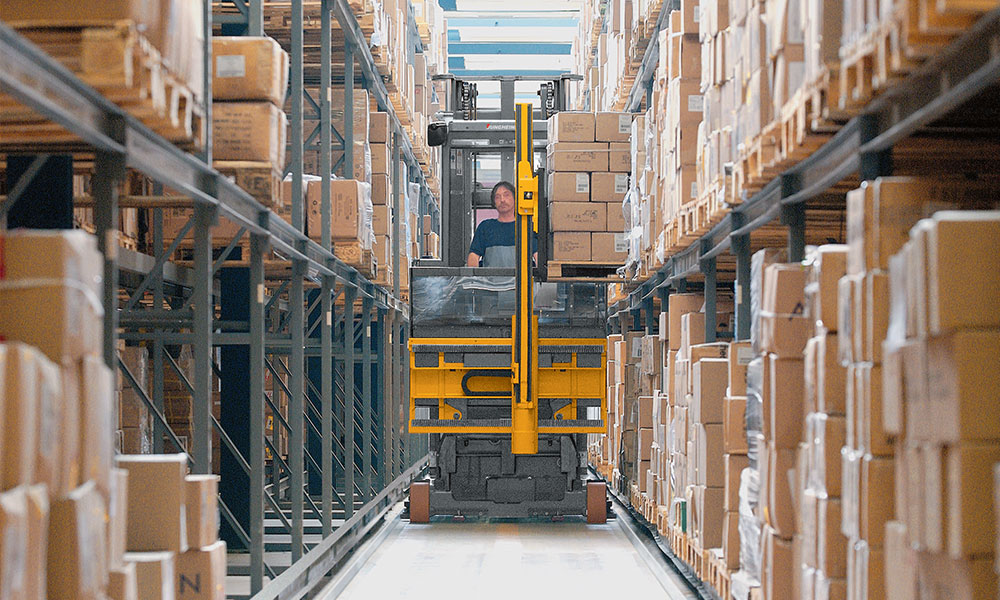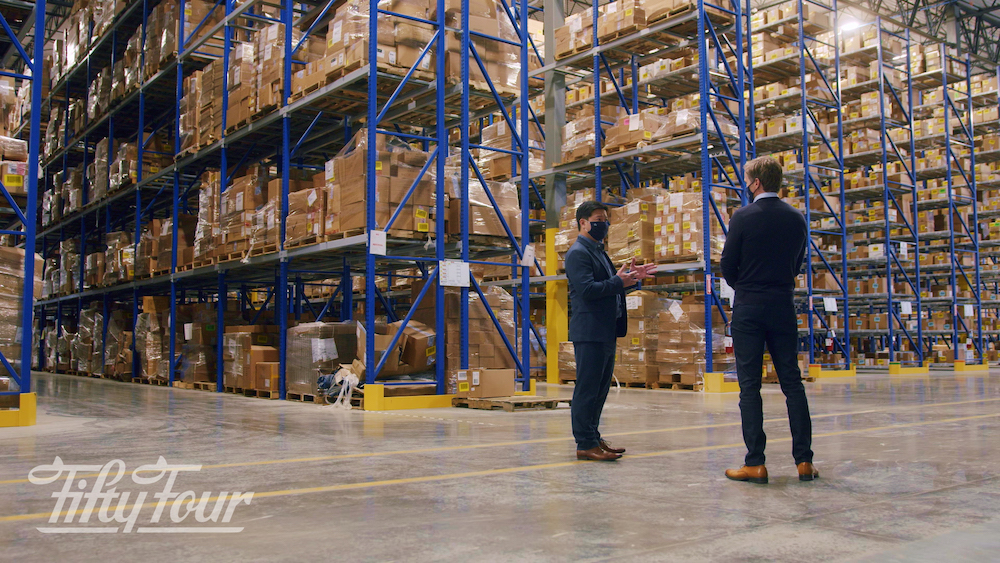
A warehouse’s receiving process is a crucial aspect of supply chain management where goods are accepted into a warehouse from suppliers or production facilities. It involves inspecting, documenting and sorting incoming items to ensure accuracy and quality. This process is pivotal for inventory management as it sets the foundation for efficient storage, retrieval, and distribution of goods. By establishing robust receiving procedures, warehouses can optimize operations, minimize errors, and maintain high levels of customer satisfaction.
In order to identify where the receiving process may break down, an understanding of the warehouse’s entire approach and methodology is important.
Identifying and Inspecting Shipments
Prior to accepting a shipment there must be a means to identify the goods that are expected. Having a warehouse receiving order label that includes details of the contents with a barcode makes it easy to identify the shipment and where in the warehouse it will be transported and stored. Through this same identifying process warehouse operators are able to schedule workers, forklifts and other equipment in advance of the shipment being delivered. The results will be optimization of the receiving process and profitable utilization of workers and machinery.
It is extremely important to inspect the shipment at the unloading stage to determine that the contents are in good working order. The products in the shipment should match the warehouse receiving order exactly. During the unloading of the shipment, attention must be focused on sorting damaged items, packages with broken seals or lost items. These discrepancies must be documented and discussed with the manufacturer or shipper. Having accurate records of these occurrences should assist with reducing the chance of damaged goods being shipped to the customer. Documentation will also identify similar incidents that can be utilized to prevent future errors.
Transporting and Storing Shipment Contents
The worker in the receiving area confirms receipt of the shipment and assigns inventory numbers to each product. Once that is done, the goods are sorted by size, category, expiration date and/or other identifying features. Where each item is sent for storage in the warehouse is included in the documentation or in the warehousing operating system so that it can be located easily. The same goes for the damaged goods. With warehouse automation and intralogistics, workers can easily find the stored product. It is much less efficient to the operation if the warehouse isn’t digitized and workers must manually search for the items.
What Can Go Wrong In Warehouse Receiving?
In the fast-paced warehousing industry, problems can arise in the receiving department. Any downtime or congestion in the material handling process can cause serious complications for operating efficiency and economics. Slow order fulfillment can definitely lead to a reduction in customer satisfaction analytics. Delays in getting the shipments unloaded, poorly organized storage areas, inefficient inventory tracking, workers untrained in the processes, or a lack of enough workers can all contribute to decreasing the value of the bottom line.

Implementing Warehouse Management Systems
Implementing and utilizing the latest technology for material handling solutions has a proven track record. Manually processing warehouse receiving actions can take a huge amount of time. Tracking inventory movement, availability of workers and equipment, and allowing for damaged goods can all present situations where errors and accidents can happen. Implementing a warehouse management system can eliminate errors and speed up the process.
By fully integrating the system with current warehouse procedures and equipment, it can compare what is on the warehouse receiving order to what is in the shipment. Discrepancies can be caught immediately and if the shipment is in good order, then it will be moved to the appropriate storage space in the warehouse. Implementing a warehouse system can help plan the incoming inventory more efficiently to avoid overflow and excess inventory.
Telemetrics can improve the receiving process along with other warehouse operations. Nowadays, systems can gather the data and offer analytics that explain every movement within the processes so that management can look for trends and methods that may be hindering efficiency and productivity. A variety of reports can be programmed into the metrics to show processes of the cycle time from the receiving dock to the storage area, the volume of items stored each hour and how long it takes for a truck to unload and leave the receiving dock.
Warehouse management systems can be incorporated into an existing process flow and provide detailed information about shipments and the receiving department capabilities in general. Modern technology offers labeling for shipments that include barcodes and Radio-Frequency Identification (RFID) tags. This is imperative to make the receiving process much easier and with a reduced number of errors in handling and identifying issues with the shipments. The labels also assist in ordering replacement products and knowing exactly what inventory is in storage. The tags and barcodes will help the receiving workers to document performance of the supplier as well as the workers to meet best practices requirements.
To assist in making the receiving department of a warehouse operate at its highest capacity, warehouse management software offers a scheduling component. The process will allocate resources and equipment to ensure the greatest reduction in labor costs. A system can be integrated into existing systems to properly manage the workers and provide analytics for increasing productivity while promoting safety measures on the warehouse floor.
As previously mentioned, inspection of the shipment as it arrives is extremely important so that damaged products can be set aside for further handling. A warehouse management system can be created to handle inventory audits to ensure quantities are available and there is adequate storage space. The analytics provided will display when more product is needed to fulfill customer demands. System-generated documents can be compared to the actual shipment to ensure accuracy in the quantities ordered and that the shipment is timely and in good condition.
Summary of Optimizing the Warehouse Receiving Processes
To summarize, to ensure inventory is handled properly to avoid issues in the critical receiving process, a fully-optimized warehouse management system can be integrated into existing processes. The benefits are numerous and include accurate product counts, less over- or under-stocking and utilizing efficient storage space for products. Warehouse management systems will provide order picking, packing and shipping components so that workers can understand the process, work efficiently and avoid issues with order fulfillment. In order to compete in this fast-paced industry of material handling, warehouse management must consider automated systems to ensure business growth. The intralogistics provider can assist with creating a checklist for implementing a productive and efficient warehouse receiving department process.

Consider Storage Solutions
Optimizing storage space is a key consideration when creating the best solution for warehouse productivity and efficiency. Warehouse capacity is paramount in providing excellent customer service in order fulfillment. If there isn’t enough space to store products, then over-stacking, storing in aisle ways and misidentifying the location of products is a huge detriment to proper material handling. Unfortunately this causes extra work for the workers, a potential for accidents on the warehouse floor and errors in order fulfillment.
To maximize storage space, it makes sense to increase the storage density. That can be accomplished by utilizing vertical and double-deep configurations or creating narrower aisles or utilizing smaller equipment. It pays to take a look at the warehouse space that is being used for other functions such as lead-acid battery charging or maintenance storage. Integrating hydrogen fuel cells and lithium-ion batteries into equipment instead of lead-acid batteries will assist in freeing up some space. The electric options can power lift trucks faster and utilize less storage space.
Depending on the warehouse ceiling height, shelving can be added vertically; however, narrow aisle turret trucks must be available to maneuver to the higher levels of storage space. Selecting the appropriate turret truck is extremely important for the safety of the operator and the products stored at higher levels. Consider the handling of the truck allowing for maximum visibility to the operator and the ability to rotate easily for handling multiple aisles and levels. New warehouse automation technology can integrate guiding options to automatically steer the truck along the best path so that the operators can concentrate on picking the correct product from the shelves.
Reach trucks can also be utilized for higher level storage of products. However, it is important to consider ergonomics, lift speed and visibility to ensure the increased storage capacity isn’t a detriment to the safety of the operator. Reach trucks can also be used to lift multiple pallets stored in the same location. Doubling up pallet loads can add more capacity than single racking. Productivity can increase with picking from higher-level and double-deep storage.
Solutions Are Available
54 Intralogistics innovative materials handling solutions deliver total optimization, utilization and maximum return on investment of every square foot of warehouse space. It takes a professional integration of equipment, warehouse products and technology to streamline efficiency and maximize productivity. The 54 Intralogistics team of professionals can assist in needs analysis, planning, CAD design, engineering, product and equipment procurement, installation as well as ongoing service and maintenance. Improvement in operational processes such as the receiving component of a warehouse function is what 54 Intralogistics does. Changes can be made to enhance the smooth operation of all areas of materials handling.
54 Intralogistics can research the warehouse space and offer solutions for maximizing the available storage area.
